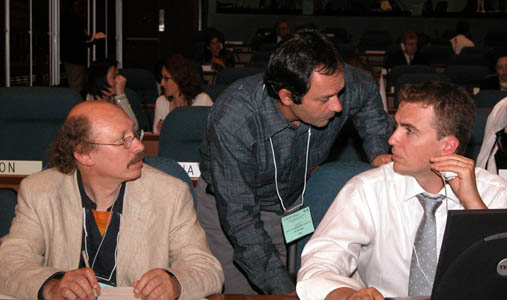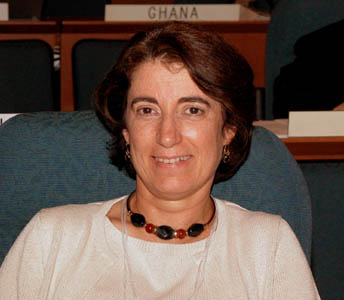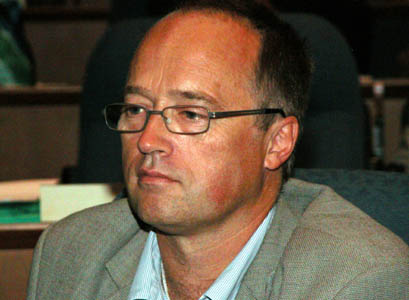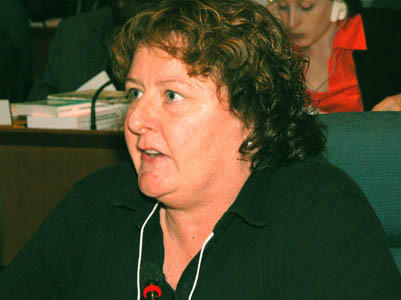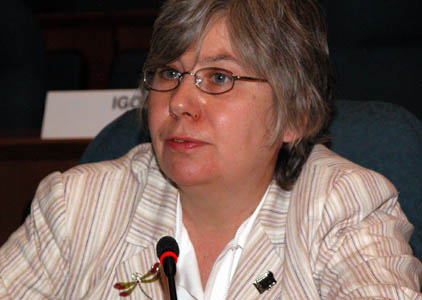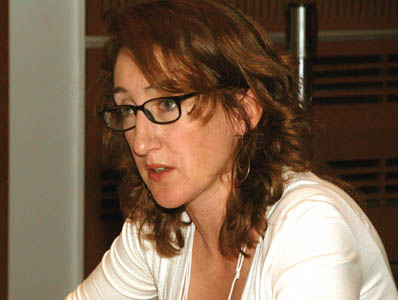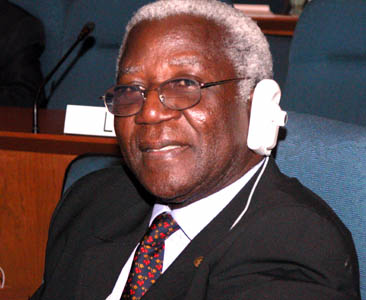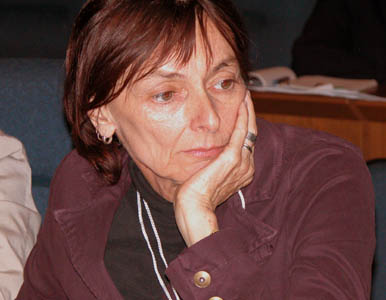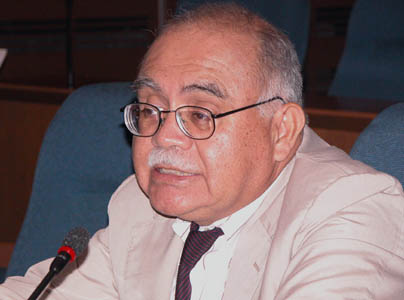|
|
|
|
Sub-Working
Group I:
|
|
Review of the Convention Processes:
On Tuesday, SWG-I considered the review of impacts and effectiveness of existing processes under the Convention, including the Convention bodies,
work programmes, tools, financial mechanism and CHM (UNEP/CBD/WG-RI/1/3 and Add 1-2, and UNEP/CBD/WG-RI/1/INF.2, 3 and 4).
|
|
|
|
|
|
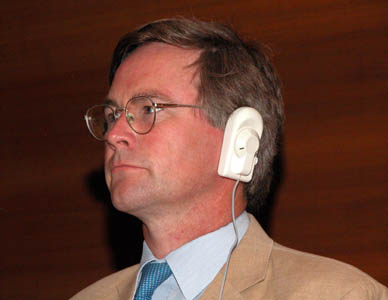
|
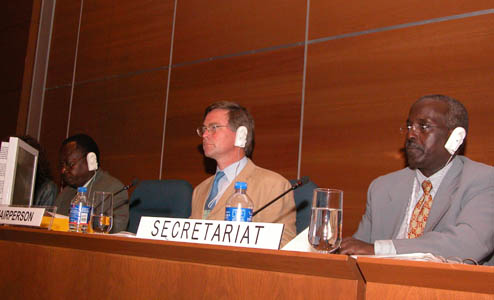
|
|
|
|
Above photos L-R: Matthew
Jebb (Ireland) chair
Sub-Working Group I (SWG-I); Chair Jebb with Dan
Ogolla and Kagumaho Kakuyo (CBD). |
|
|
|
Cuba, Argentina, Peru,
India and others suggested
focusing COP decision making on implementation-related
issues. Many Parties opposed changing the periodicity of
COP meetings prior to COP-10, with some expressing concern that
reducing periodicity will undermine the momentum of
implementation, and others supporting a proposal by Cuba
to review periodicity after COP-10. Mexico, Switzerland
and Brazil supported extending periodicity to three years to
allow monitoring progress. Above photos L-R: Marcela
Nicodemos (Brazil) and Sujata Arora (India)
|
|
|
|
|
|
|
|
|
Above photos L-R: Christian
Prip (Denmark), Annemarie Watt (Australia)
and Glenys Parry (United Kingdom)
|
|
Australia
stressed that Friends of the Chair groups must be open to all
interested Parties. Cuba, supported by many, proposed developing
guidelines for the operation of contact and Friends of the Chair
groups. Australia emphasized Parties’ responsibility for considering
workload implications when taking COP decisions, while the EU
stressed the need to streamline processes. SBSTTA-11 Chair
Christian Prip (Denmark) stressed SBSTTA’s role in the
implementation phase of the Convention, and, supported by many
Parties, stressed the need for better engagement with the
scientific community and adequate selection of SBSTTA delegates.
Many called to refocus SBSTTA’s work on the provision of
scientific and technical advice, rather than serving as a
preparatory meeting for the COP. Suggestions included: reducing
SBSTTA's workload; focusing on monitoring progress towards the
2010 target; enhancing technical content of recommendations;
ensuring that requests to SBSTTA clearly address scientific
advice, and preparing a multi-year programme of work for SBSTTA.
|
|
|
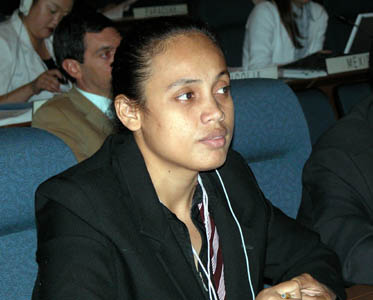
|
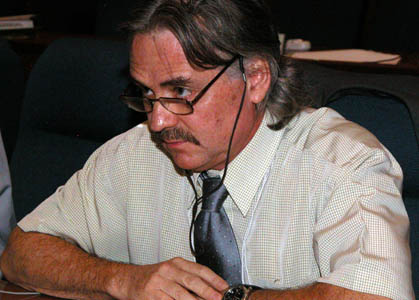
|
|
|
|
Kiribati
said that regional organizations could serve as focal
point for Pacific SIDS, noting the need to
involve local-level communities and the private sector.
Many Parties opposed the establishment of
an international mechanism for review, scientific
assessment and policy advice, with several stressing that this role is fulfilled by SBSTTA
. Madagascar asked for additional information on the nature of such a
mechanism. Sri Lanka,
Tunisia and Switzerland supported consideration of a
mechanism for implementation. The
EU favored further meetings of the WGRI, albeit cautioning
against the proliferation of meetings under the CBD.
Above
photos L-R: Conchita Paul Tatireta (Kiribati) and Robert
Lamb (Switzerland)
|
|
|
|
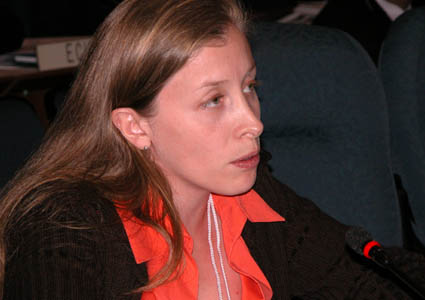
|
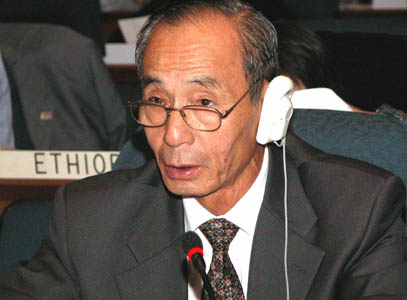
|
|
Above
photos: Marta Ligia Pérez (Colombia) and Weixue
Cheng (China) |
|
|
Review
of the CHM
In
the afternoon, SWG-I addressed the review of the Clearing
House Mechanism (CHM), including its Strategic Plan (UNEP/CBD/WG-RI/1/4
and UNEP/CBD/WG-RI/1/INF.11). The EU supported a
“user-focused” in-depth review of the CHM by COP-10.
Colombia said that the CHM should develop its potential for
scientific cooperation, developing country capacity and
technology transfer, and suggested a reference to traditional
knowledge with respect to associated patent requests, and a link
between the CHM and the WIPO International Patent
Classification. Mexico suggested the Strategic Plan of the CHM be
extended from 2009 to 2010.
China called attention on how to promote the CHM at the national
level. Saint Lucia emphasized strengthening CHM focal points, including
through regional networking, to meet the needs of developing
countries in implementing the Convention, in particular ABS.
|
|
Sub-Working Group
II:
|
|
|
|
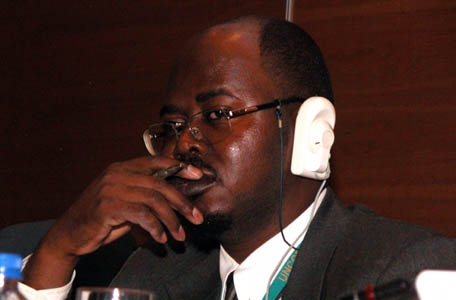
|
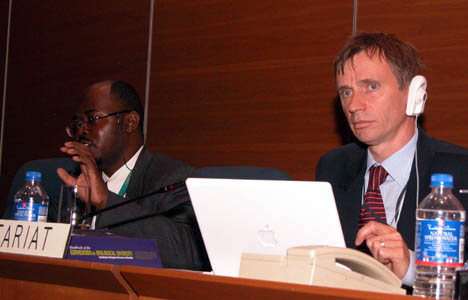 |
|
|
|
Above
photos L-R: Sem
Shikongo (Namibia) chair
Sub-Working Group II (SWG-II); Chair Shikongo with
David Cooper (CBD) |
|
|
Cooperation
with other conventions:
On
Tuesday morning, SWG-II participants focused on CBD cooperation
with other conventions and organizations, including the
suggested recommendation on the establishment of a global
partnership for biodiversity (UNEP/CBD/WG-WRI/1/7 and Add.1-3,
UNEP/CBD/WG-WRI/1/INF/7).
|
|
|
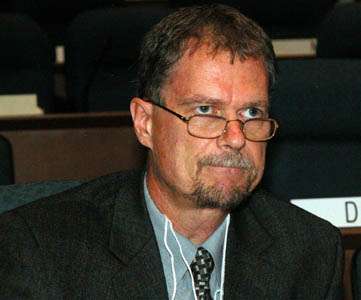
|
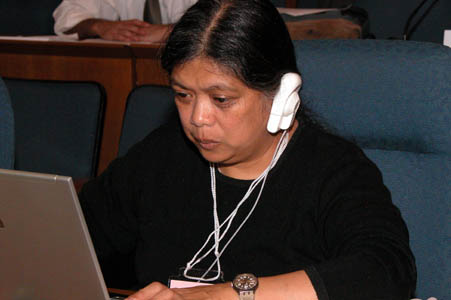
|
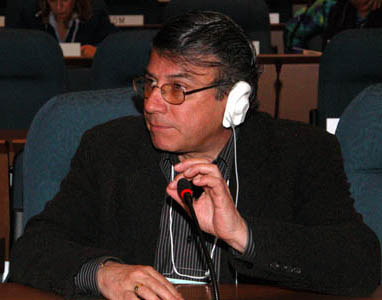
|
|
|
Above
photos L-R: Ole Hendrickson
(Canada), Joji Cariño (Tebtebba Foundation) and Fernando Casas (Colombia)
|
|
Colombia
and Cuba suggested including in the proposed
recommendations CBD cooperation with the WTO and other
relevant socioeconomic agreements. Tebtebba Foundation
encouraged strengthening cooperation with other
environmental agreements, WIPO and WTO, in order to
increase participation of indigenous peoples in processes
where their participation has been limited. Canada
advocated for the inclusion of indigenous peoples , NGOs, and
research groups within liaison groups of Conventions. New Zealand emphasized that
proposals for cooperation should be pursued on a
case-by-case basis, with clear mandates and guidelines
provided by the Parties. |
|
|
|
|
|
|
Above
photos L-R: Mohd Yunus Zakaria (Malaysia) speaking with
ENB writer Reem Hajjar; Jane
Coombs (New Zealand); Alfred Oteng-Yeboah (Ghana)
|
|
Reiterating
the lack of emphasis on the second and third objectives of the
Convention, Malaysia, supported by Cuba and Colombia,
recommended that a liaison group on the sustainable use of
biodiversity and ABS be formed. Cuba
suggested the development of specific action plans for
cooperation with other conventions, once memoranda of
understanding have been concluded. New Zealand wished to discuss
the proposal to establish a liaison group on invasive alien
species only when Parties consider the report of the
Ad
Hoc Technical Expert Group on Invasive Alien Species.
Ghana
praised the cooperation between the CBD and the CITES (UNEP/CBD/WG-RI/1/INF/9),
expressing support for the development of the CITES
strategic vision towards 2010.
|
|
|
|
|
|
Above
photos L-R: Linda Collette (FAO); Rocio Lichte (UNFCCC);
Mario Ramos (GEF)
|
|
|
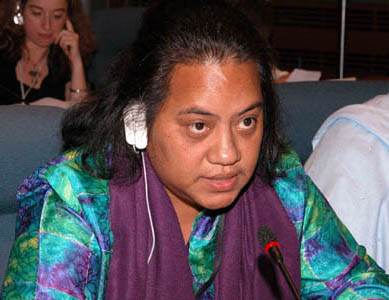
|
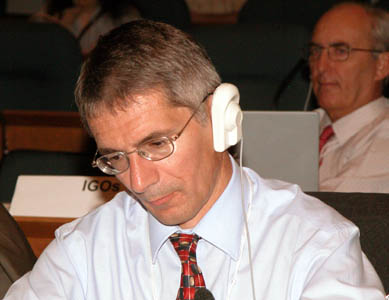
|
|
Above photos L-R: Terei
Abete-Reema (Kiribati) and Roy Hathaway (United
Kingdom)
|
|
|
Stakeholder
engagement
SWG-II
focused on ways and means of engaging stakeholders,
including the private sector, in the implementation of the
Convention on Tuesday morning (UNEP/CBD/WG-RI/1/8 and UNEP/CBD/WG-RI/1/INF/5).
The EU called for increasing outreach to the scientific
community and business, and, supported by Zambia,
requested a reference to environmental impact assessments
as a tool to facilitate contributions from business and
industry. Kiribati requested that the Secretariat
and SBSTTA provide technical assistance in private sector
engagement at the national level.
National reporting
SWG-II
discussed national reporting under the Convention and other
conventions on Tuesday afternoon. Discussion focused on
considering ways and means of improving the national reporting
process by linking the format more closely with the 2010
framework and the goals and objectives of the Strategic Plan,
increasing compliance with reporting requirements, and
facilitating harmonization with reporting processes in other
biodiversity-related conventions (UNEP/CBD/WG-RI/1/10 and UNEP/CBD/WG-RI/1/INF/6).
|
|
|
|
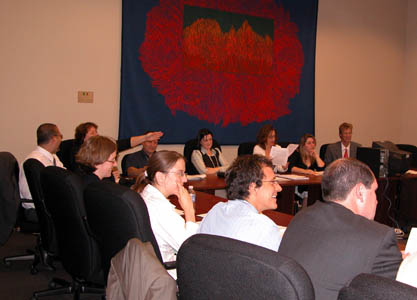
|
Framework for Monitoring
Implementation
In
the afternoon, SWG-II considered the framework for
monitoring implementation of the Convention and
achievement of the 2010 target, and review of thematic
work programmes (UNEP/CBD/WG-RI/1/9 and UNEP/CBD/WG-RI/1/INF/1).
The EU, supported by China, Canada and Norway, suggested
revising the proposed indicators for the goals and
objectives of the Strategic Plan, requesting that a
maximum of two indicators be adopted for each goal. The
Nature Conservancy and the Conservation Measures
Partnership urged Parties to consider integrating the
existing indicators into a framework that measures the
ecological viability, threats and protection status of
biodiversity at national, eco-regional, regional and
global levels. New Zealand pointed out that indicators at
the national level may not be useful at the global level,
and suggested measuring global targets through a
global-level analysis. SWG-II Chair
Shikongo
established a Friends of the Chair group to further
discuss indicators, which met on Tuesday evening.
Left photo: View of the Friends
of the Chair group
session on indicators. |
|
|
|
|
|
|
|
|
|
|
|
|
|
|
|

